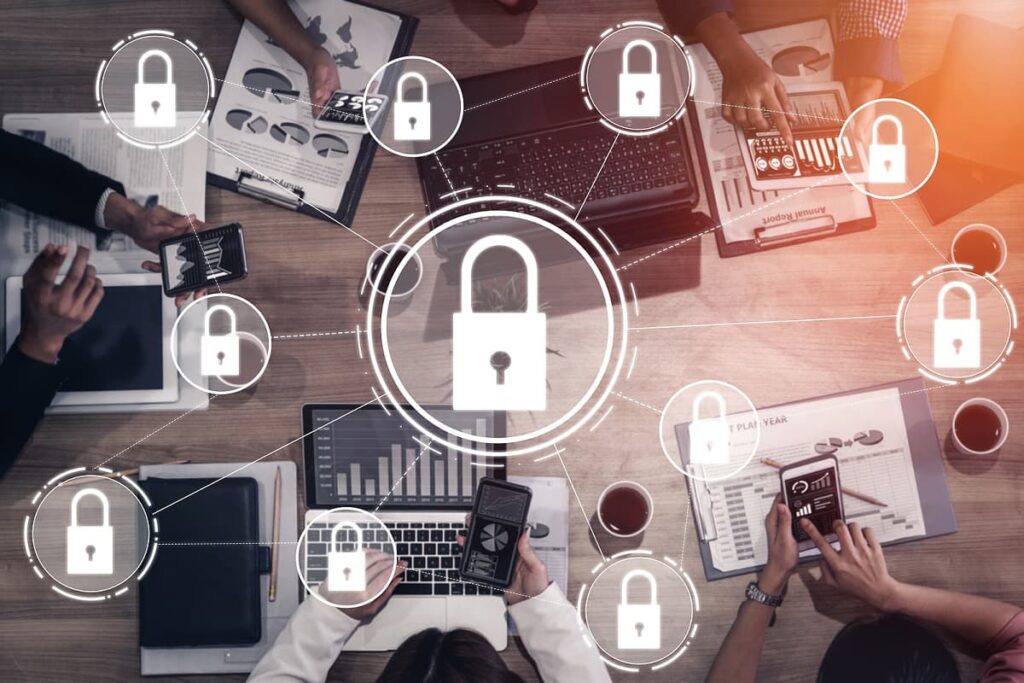Solving the Global Identity Verification Problem
Table of contents

The entire world is as connected as the closest WiFi spot, which means that as a business, you need to be thinking globally. While more than half our audience hails from the United States, we have readers coming from every single country on this planet – except the DPRK. If you’re a business that provides a location-agnostic service of any kind, the world is now your oyster. Financial services, in particular, are being democratized so that there are numerous ways to move money across borders without being fleeced by Western Union. Sending money to that sweet young lass you met on Sukhumvit Soi 4 has never been easier. However, there is one problem that all businesses will face when trying to conduct business across the digital divide – they need to verify that you are who you say you are. In order to begin solving this problem at a global scale, you first need some ground truth, like a database of all acceptable forms of identification.
Solving the Identification Problem
In the U.S. alone, there are more than 600 variations of the driver’s license. Anyone who has ever held up the night club queue while their out-of-state ID was being scrutinized knows this problem well. Outside of ‘Murica, you will find all kinds of acceptable forms of ID in all the world’s 194 countries. Expect to encounter some absolute shite. For example, the big data experts in Indonesia we spoke with said they were finding numerous cases of Indonesians sharing the same “unique identifier” on their national identity cards. (The country’s digital identity project stalled when some of the staff ran off with $170 million of the program’s $440 million budget.) So, add all these boundary cases, many more of which you’re likely to come across in Africa’s 20-odd dictatorships.
Then, once you establish that database, you need to monitor for any new forms of identification that pop up. When you’ve established a sufficient number of images, you can then train some machine learning algorithms to recognize acceptable forms of identification based on smartphone pictures. Now, you can verify the individual on the identification document against a live selfie of the person. Lastly, try and account for the hundreds of ways that fraudsters could trick your process, because if you don’t, they will. In a nutshell, that’s how you solve the identification problem.
In order to see how this works in real life, we decided to visit an Estonian startup called Veriff which is presently offering identity verification services to clients around the globe. In one of the coolest startup offices we’ve seen in a while, we had a chat with Veriff’s Chief Marketing Officer, Triin Uustalu, about a future world where everyone on the planet has an acceptable form of identification.
About Veriff

Update 07/03/2020: Veriff has raised $15.5 million in funding for international expansion. This brings the company’s total funding to $23.3 million to date.
The use case is easy to think through based on what we described earlier. John Doe from Kraplakistan wants to open a bank account, and your job is to make sure he is who he says he is. You first need a picture of his government-issued ID which you can verify for authenticity against a known database of images that gets richer as more people use it. Then, you need to make sure the man behind the keyboard matches the government-issued ID using a selfie. In Veriff’s case, they were the first startup to use video as opposed to just a selfie. (They’re able to detect less obvious scams that way, like someone off-screen coaching an elderly person through the process.) Today, they may not be the only company using video verification, but they’re the smartest one since their algorithms have been trained the longest.

In the early days, Veriff started out training their algorithms with a few larger clients. Over a period of three years, they were forced to turn away more than 4,000 interested companies. When their algorithms were sufficiently trained, they had not only mastered the verification process, but also the customer experience. Most people who use Veriff’s service are first-time users, and yet 95% of the time they complete the process successfully on the first try. That conversion rate is a competitive advantage for Veriff, and it’s also a very intriguing metric for all the fintech or sharing economy apps that are so heavily focused on optimizing the user experience.
Fighting Fraud
In the early days of Uber, fraud was considered a cost of doing business. Today, the purse strings have tightened, and removing fraud can have a direct impact on the bottom line. With 4 in 100 verification attempts being fraudulent, there are a multitude of things you need to watch out for. Triin said the creativity they see is remarkable. From fictitious fiefdoms to fake kings, criminal groups like the Sakawa Boys or hacking groups like Silence are always trying to beat the system. Fast-growing companies in the small-to-medium range are targeted most by fraudsters who fully expect that growing businesses don’t have the financial means to invest in sufficient protection. Here are some examples of less sophisticated methods of passport tampering:

In order to democratize access to their platform, Veriff released Veriff Station which targets businesses that have 2,000 or fewer authentications per month. Companies of any size can now enjoy the combined forces of machine learning and in-house specialists that keep Veriff two steps ahead of digital fraud. Artificial Intelligence speeds up sessions with Assisted Image Capture, while manual checks by their verification teams are reserved for complex cases. If that value proposition sounds familiar, that comes as no surprise. There are at least 20 other startups out there offering some form of digital authentication service, the most popular being Onfido.
Veriff vs. Onfido
Founded in 2012, London, England startup Onfido has taken in just over $78 million in funding from investors that include Salesforce which led their last round, a Series C in April of last year for just over $36 million. We first came across Onfido in a piece we did a few years back on 6 Digital Identity Verification Startups to Check Out, and they seem to offer the same exact identity verification service that Veriff does. Veriff supports 7,400+ government-issued IDs from 190 countries and territories, and Onfido supports 4,500 identity documents across 195 countries. We can probably assume both companies have the majority of the world’s population covered here, so they both share the same total addressable market. And it appears that Onfido is taking a piss in Veriff’s back yard with their December 2019 press release about landing an Estonian client:
This is our latest partnership in Estonia as we continue to displace older methods in the market. Four other businesses in Estonia have already followed Entify and have also become clients of Onfido.
Triin chuckled when we made mention of Onfido’s comments saying that given Veriff operates in a global market, it’s not much of a concern to them. She’s grateful that companies like Onfido raise awareness of a need for digital identity verification and help build the marketplace. Where Veriff plans to differentiate itself is in the breadth of client sizes they target and the functionality they offer. For example, they recently released functionality that uses Near Field Communication (NFC) to read chips on IDs equipped with this feature. This allows someone to very quickly validate their passport, and it’s also a clever way to establish some ground truth for quality control purposes.
Update 04/15/2020: Onfido has raised $100 million in funding to continue building an alternative “identity verification” layer of the internet as well as work on a new set of use cases. This brings the company’s total funding to $182.1 million to date.
Veriff’s product is highly configurable which means clients can configure verification features based on their specific needs and risk tolerance. Businesses can choose a fully automatic verification service that verifies an identity in a matter of seconds. This configuration suits clients who value conversion rates and speed and run limited volumes of ID checks. More risk-averse businesses, who may focus on preventing individual cases of fraud, can opt for a deeper configuration that leverages both automation and specialized human intuition concurrently in order to build trust and maximize protection. In addition to document validation and face matching, these companies can dig deep with capabilities such as browser, device, and network ID tracking and fingerprinting; background video analysis and liveliness checks for fraud detection, KYC compliance and PEP and Sanctions checks.
The Future
When speaking with Triin, she kept emphasizing how her company was looking to solve much bigger problems than just verifying-identities-as-a-service. With 13% of the world’s population not having any acceptable form of identification, some sort of globally accepted digital identification could be very useful to have. In some of the most poverty-stricken places on the planet, you’ll still see people walking around with smartphones. In most of these places, there will be ways to access the Internet. Soon, Starlink’s satellites will rain down dirt-cheap broadband across every location on this planet. If startups like What 3 Words now allow anyone to have an address, why not give them a form of identification as well? That’s what Veriff is working towards, and they’re in the right place to do it given Estonia’s nationwide use of e-identity and e-voting over the past 15 years.
Conclusion
Somewhere around 40% of the world’s population doesn’t have access to banking services because they can’t be verified. In countries around the world like DR Congo, another Baltic startup – Neurotechnology – found that the voting process was rife with duplicates and underage voters. Veriff’s services can solve some major problems for the world’s emerging markets in addition to helping them buy more stuff online from Amazon. Given their Estonian roots, Veriff knows all about how great their country’s digital identification system works and can easily see that vision when they look at other countries. They also see the demand, with companies signing up to Veriff Station on a daily basis. With every day that passes, they become just a little bit better at solving the global identity verification problem.
Sign up to our newsletter to get more of our great research delivered straight to your inbox!
Nanalyze Weekly includes useful insights written by our team of underpaid MBAs, research on new disruptive technology stocks flying under the radar, and summaries of our recent research. Always 100% free.














